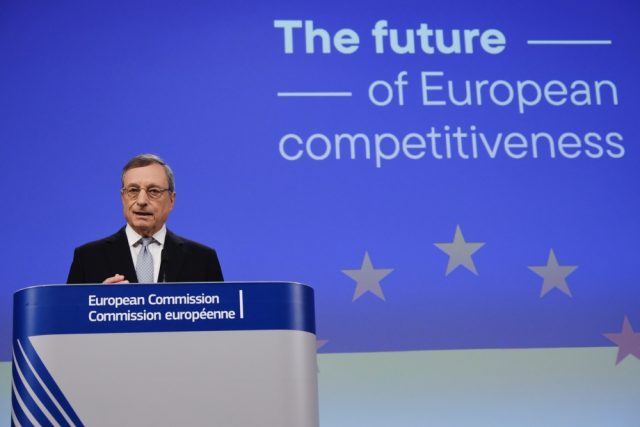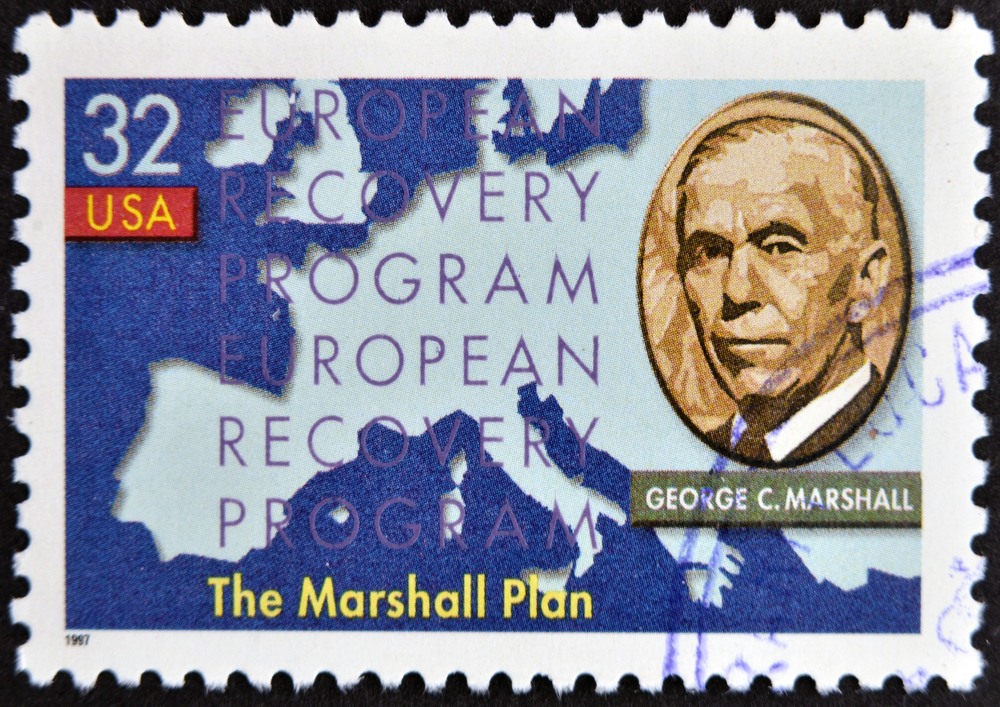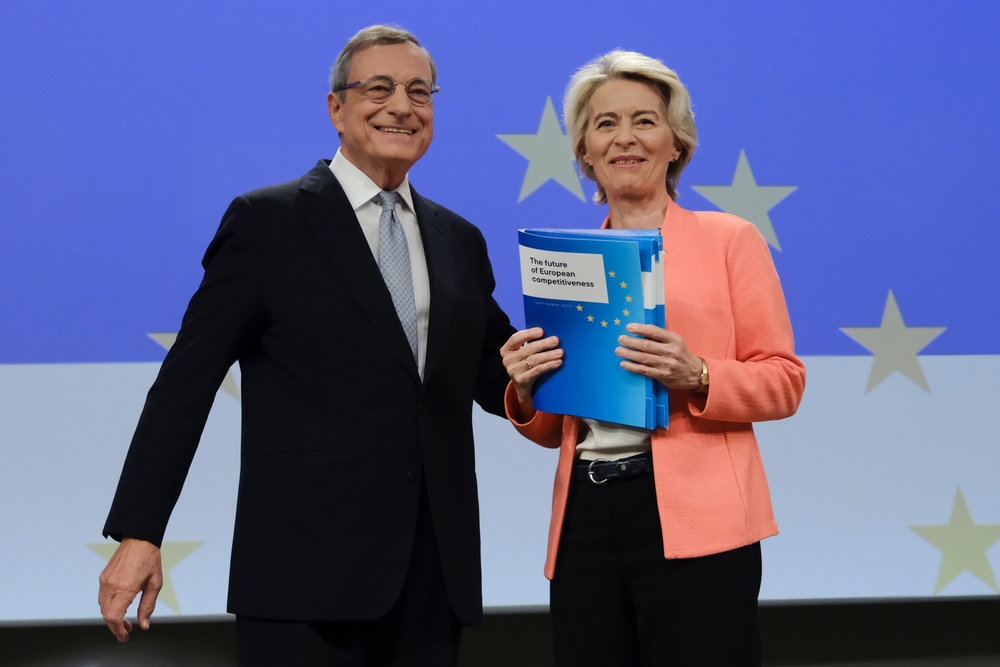
Mario Draghi’s plan for the EU: Delays and opportunities for today’s Europe.
 In 1947, the US Secretary of State George Marshall implemented a groundbreaking initiative known as the European Recovery Plan, later termed the Marshall Plan. This far-reaching program set out to offer economic aid to the war-torn European countries in the wake of World War II. The aim of the Marshall Plan was not only to rejuvenate the economies of the recipient nations but also playing a crucial role in establishing political stability across Europe. By laying the foundation for European integration and subsequent economic prosperity, the Marshall Plan left an indelible mark on the region for decades to follow.
In 1947, the US Secretary of State George Marshall implemented a groundbreaking initiative known as the European Recovery Plan, later termed the Marshall Plan. This far-reaching program set out to offer economic aid to the war-torn European countries in the wake of World War II. The aim of the Marshall Plan was not only to rejuvenate the economies of the recipient nations but also playing a crucial role in establishing political stability across Europe. By laying the foundation for European integration and subsequent economic prosperity, the Marshall Plan left an indelible mark on the region for decades to follow.
In a recent development, Mario Draghi, the former Prime Minister of Italy and the European Central Bank, has put forward a significant report addressing the future competitiveness of the European Union (EU). In his report, he refers to the Marshall Plan as a model that can be used to tackle the current economic challenges faced by the EU. This article aims to delve into the historical context of the Marshall Plan, analyze Draghi’s recommendations, and discuss the potential implications for Europe.
In the 2020s, Europe is once again caught between the democratic Atlanticist alliance and the Eastern Communist bloc, reminiscent of the challenges it faced in the previous century. The United States and China’s increasing global competition is pressuring Europe to take decisive action to safeguard its well-being and freedom. Therefore, there is a critical need for an ambitious and carefully organized economic plan to ensure Europe’s continued prosperity and autonomy in this evolving geopolitical landscape.
The Italian economist is stepping into the role of the former US secretary Marshall and has put forward a set of recommendations aimed at boosting the competitiveness of the EU. The plan, often referred to as the “Draghi Plan,” focuses on key areas such as digitalization, decarbonization, and the need for a more efficient energy market. It emphasizes the importance of reducing costs for businesses and citizens while harnessing clean technologies. Additionally, the plan highlights the necessity of reducing dependence on external countries like Russia and China. Finally, it calls for increased funding for research and development, particularly in defense and advanced technologies.
 The key proposal, however, remains the need to increase investments in Europe by around 750-800 billion euros per year, equivalent to 4.4-4.7% of EU GDP in 2023. This represents a significant increase compared to the historic investments of the Marshall Plan. A common debt is therefore what the former Prime Minister proposes, which would cascade down on all citizens of the member states, thus increasing the social gap that has long weighed on the population, also considering the general delay that the European Union has in its ability to address problems related to late payments, and this has a direct impact on the competitiveness of SMEs.
The key proposal, however, remains the need to increase investments in Europe by around 750-800 billion euros per year, equivalent to 4.4-4.7% of EU GDP in 2023. This represents a significant increase compared to the historic investments of the Marshall Plan. A common debt is therefore what the former Prime Minister proposes, which would cascade down on all citizens of the member states, thus increasing the social gap that has long weighed on the population, also considering the general delay that the European Union has in its ability to address problems related to late payments, and this has a direct impact on the competitiveness of SMEs.
Mario Draghi emphasized that Europe has reached a critical juncture: “We are now at a crossroads where we must decide whether to sacrifice our prosperity, our environment, or our freedom if we do not take action,” stated the former Italian Prime Minister. He proposed a digitally driven and publicly funded Marshall Plan, stressing the essential requirement for a shared debt to enable joint investment initiatives. This long-term strategy is anticipated to yield immediate outcomes.
Without decisive and common action, Europe risks compromising that autonomy and freedom that more than ever must remain firm in a context of global insecurity such as the one we are once again facing, in a chessboard in which the European Union must play an important role and not just a supporting actor.
In conclusion, Mario Draghi’s position bursts into a very particular context and with truly unusual vigor: but while the Marshall Plan represented the response to an immediate need, today’s proposals aim to guarantee competitiveness and security in the long term, which is the true perspective from which to look at the destiny of Europe. This perspective underscores the evolving needs of Europe, where digitalization, sustainability, and energy security are paramount. Failing to address these issues would jeopardize Europe’s position in the global landscape and its relevance for the future.



 Subscribe
Subscribe